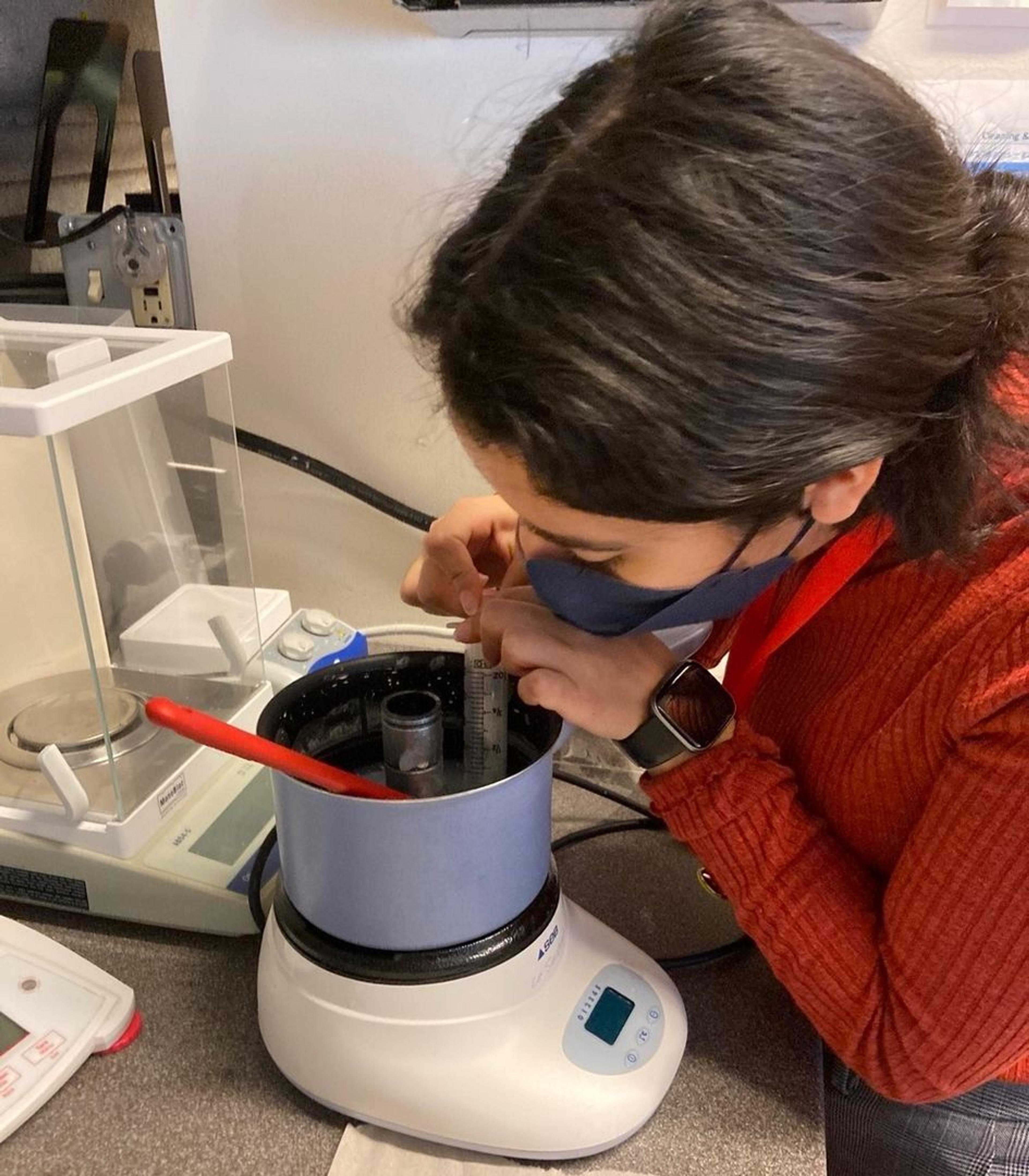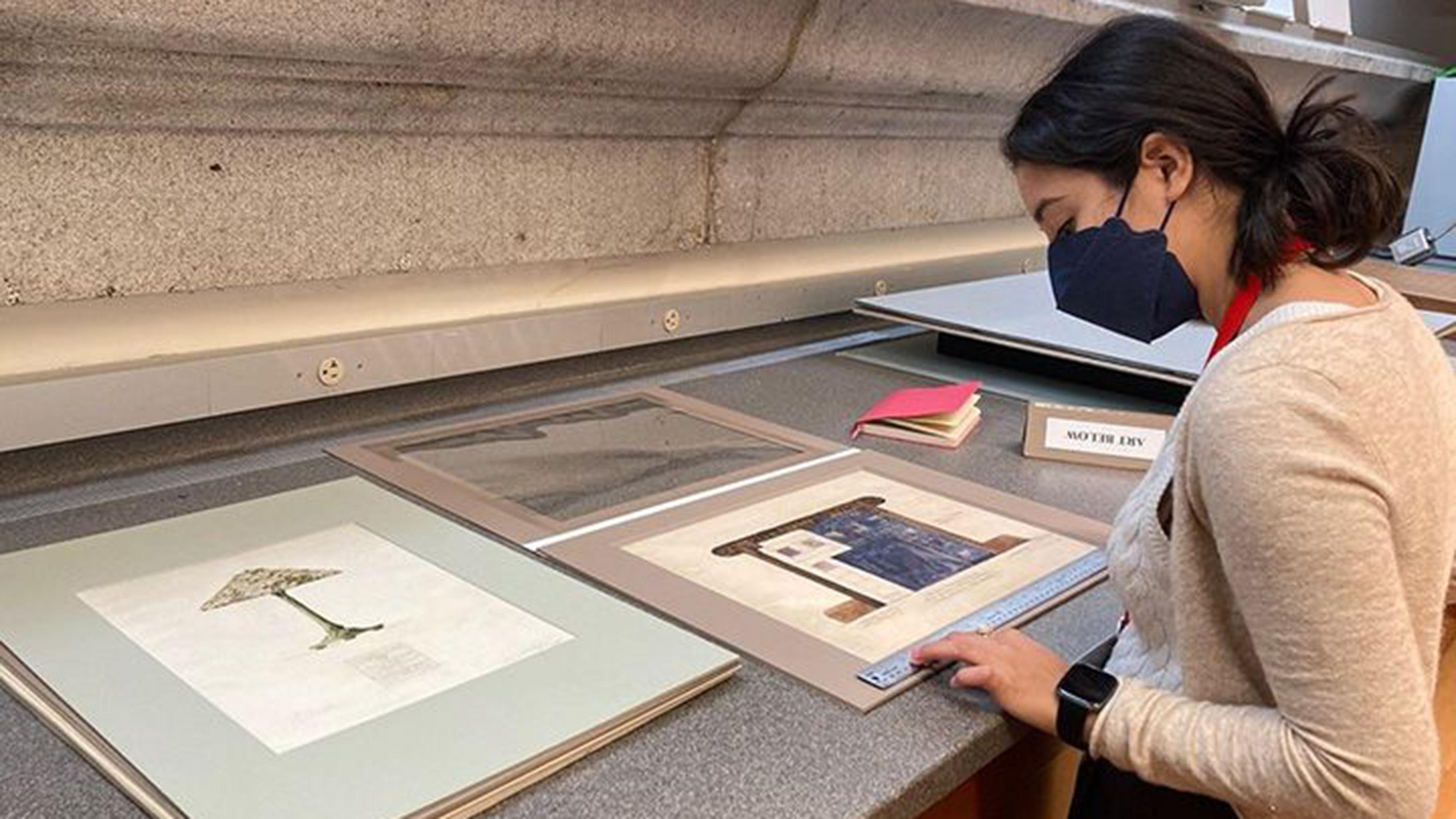A “pre-program” intern, as the term is used in the conservation profession, is someone who is interested in applying to a graduate program in conservation but hasn’t yet begun graduate studies. Internship experience in museums or private conservation practice has become increasingly important and commonplace for applicants to US graduate programs in art conservation over the last decade or so and is required for admission to some programs.
I was a pre-program intern in the Paper Conservation lab here for about a year as a senior in college. Now I can pay forward the time and attention my mentors gave me as a supervisor for our pre-program interns today. Although sometimes I feel like I went to graduate school in the dark ages (pre-smartphones!) the experience of being a pre-program intern in our lab hasn’t changed all that much. The only major change is that all interns at The Met are now paid, a most welcome development that will hopefully aid in increasing diversity among conservation and other arts-related graduate programs.
The three major criteria for admission into conservation graduate programs are academic requirements in chemistry, studio art, and art or cultural history. As pre-program interns in the Paper Conservation lab, prospective conservation graduate students can start to experience how each of these areas come into play in the daily work of a conservator.
Chemistry
We expect that interns have begun the chemistry requirements for all conservation graduate programs, including organic chemistry, as it is foundational to an understanding of conservation and many of the basic tasks in a conservation lab. We ask our pre-program interns to prepare solutions that we use for cleaning, adhesives, and other purposes. What can seem abstract in chemistry class becomes concrete as interns use knowledge of pH, solubility, molecular weight, polarity, etc., to produce materials used in conservation treatments. Pre-program interns are also responsible for the preparation of wheat starch paste, our primary adhesive, which skews a little bit closer to cooking—but as any chef will tell you, there’s a good deal of chemistry involved in the kitchen as well.

Adriana filling syringes with cooked wheat starch paste
We sometimes conduct mini-experiments with our interns, such as this one involving different formulations for heat-set tissue used for tear repairs. Adriana Vergara, our intern this fall, used three different adhesive recipes and two different types of Japanese tissue to compare the results on mock-ups and determine, along with the lab conservators, the best combination for use in an upcoming project.

Trying out different heat-set tissue recipes for comparison
Fine art
While conservators are not required to be accomplished artists, manual dexterity (known in the field of conservation as “hand skills”), an eye for color and texture matching, and a deep knowledge of artists’ materials are essential for conservation work. Pre-program conservation interns typically engage in some basic conservation treatments on non-accessioned objects. This allows interns to explore hand skills such as using a microscalpel blade to reduce adhesive, re-aligning torn paper and repairing tears with wheat starch paste and Japanese tissue, and surface cleaning with vinyl erasers. Pre-program conservation interns also design and construct storage housings such as custom boxes.

A tear-repair treatment project
Art history
A strong background in art history is a natural part of a conservator’s skill set, as an understanding of the materials, technique, and artistic intent of a particular object is essential to determine an appropriate course of treatment. The unique expertise of a conservator comes, principally, from looking closely at many objects, and building up a strong base of understanding about how specific artists’ materials change over time and how they will react to conditions or treatment.
The experience of being a pre-program intern in a conservation lab is the first step towards building that knowledge base. Conservators in our lab take time to discuss objects ready for treatment or examination with our interns to point out what we’re looking for and how it relates to the technique or materials of that particular object. We also have pre-program interns accompany us in exhibition installations and condition checks in our central storeroom, giving a sense how conservation functions within the activities of a museum and allowing interns to look at as much art as possible.
While the experience of a pre-program intern in the Paper Conservation lab is somewhat dependent on the ever-changing activities of the moment, we always give our interns a broad view of the skills and knowledge needed for a career in art conservation. For some interns, this experience can lead to a better understanding of themselves and what kind of career or specialty they want to pursue. For myself—someone who thought I would become a paintings conservator—it meant discovering a love for the world of works on paper and their conservation!
